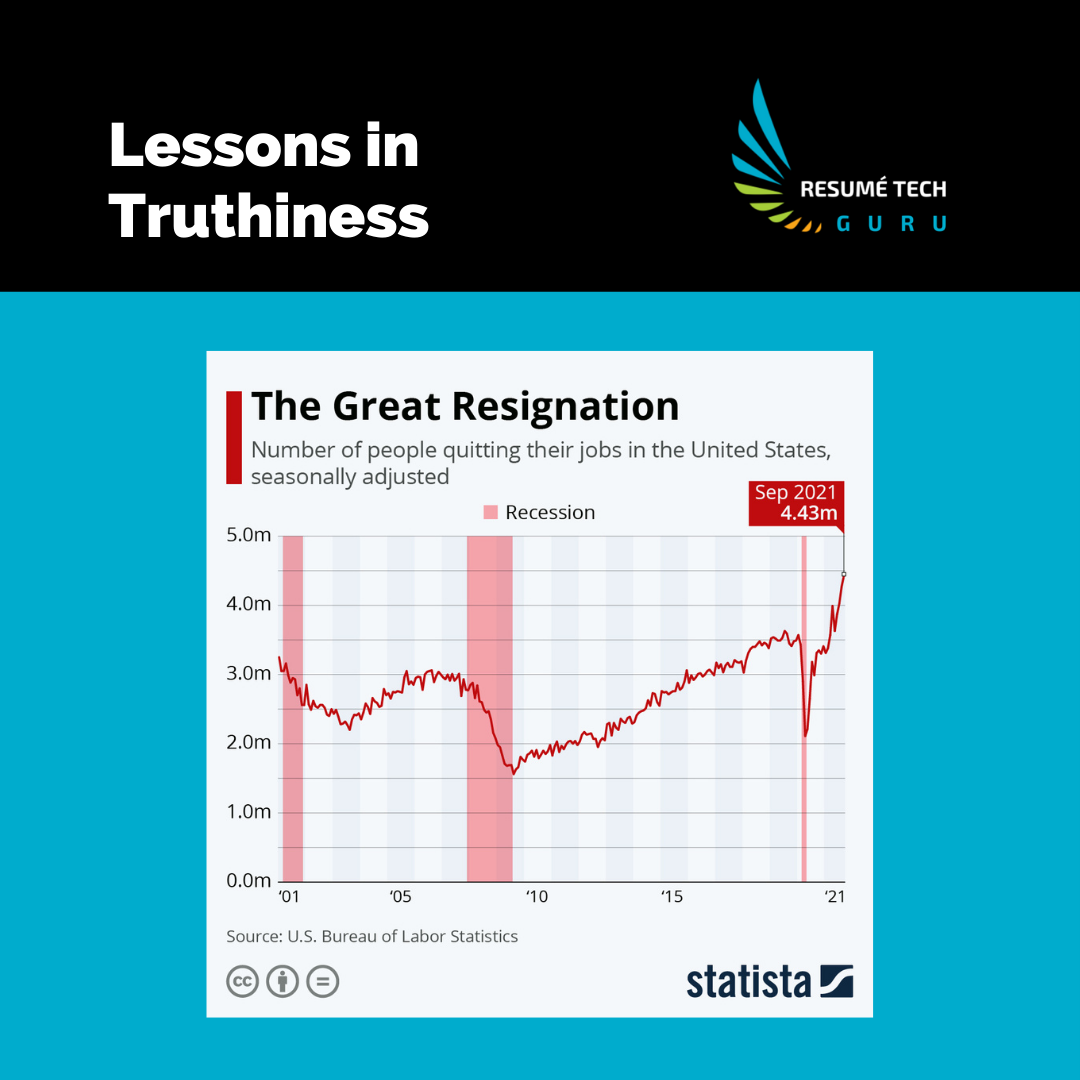We’ve all heard about the “The Great Resignation.” While seeing this buzzword on different media platforms, I wondered about its impact across industries and regions. It led me to one of my favorite things … in-depth research.
A year ago, a fellow Texan (albeit an Aggie, I’m a Texas-Ex) coined this work resignation terminology correlated to the pandemic’s uncertainty. Dr. Anthony Klotz is a psychologist and professor at Texas A&M:
“From organizational research, we know that when human beings come into contact with death and illness in their lives, it causes them to take a step back and ask existential questions.”
“Like, what gives me purpose and happiness in life, and does that match up with how I’m spending my right now? So, in many cases, those reflections will lead to life pivots.”[1]
My preliminary thought was that people quit their jobs and lounged on the couch with their NFT (non-fungible token) Game avatar.
Spoiler alert, I was wrong.
The Quit Rate
How did they figure out who all was part of The Great Resignation? It’s easy; the U.S. Bureau of Labor Statistics kept tabs on the employment “quit rate” for over 20 years.
The quit rate—aka The Great Resignation rate—is calculated by the number of people in a particular industry who voluntarily leave their job during the entire month as a percentage of total employment.
The quit rate has risen every year since 2010.
The national quit rate peaked at 2.8% in April 2021, the highest of any year on record since the Bureau began collecting the data in 2001.[2] It equals 4.1 million people quitting their jobs.
Truthiness
I first heard about “truthiness” while watching comedian Stephen Colbert during his Comedy Central satirical mock news shows. He referred to the quality of preferring concepts or facts one wishes or believes to be true rather than actual concepts or facts.
Here’s the truthiness about The Great Resignation of 2021—it wasn’t a double-digit percentage of people quitting their jobs. It was a mere .4% bump from the highest rate for the past decade. Further, it was a blip for particular industries or U.S. regions.
From January 2010 to January 2020, the U.S. national monthly average quit rate ranged between 1.3% and 2.4%. The latest monthly statistics (reported 2 months in arrears) arrived for October 2021 at 2.8%.
My analysis reveals quit rates are at previous levels at the cross-section of remote work with higher pay. For example, the quit rate for the Information sector, which is my executive client base—computer programming, system design, and telecommunications—was only 1.8%, with 50,000 people resigning their jobs in October.[3] It’s been a pretty consistent quit rate looking back over the past 4 years, with annualized rates ranging between 17.2-19.3%.[4]
Compare that to the Leisure and Hospitality industry with annualized quit rates 2-3 times over the Information/Tech sector, ranging between 48.3-55.6%. It makes sense with cruise lines, amusement parks, hotels, and restaurants being ravaged by Covid. Higher quit rates appear in industries with low-paying, low-skilled jobs with a lot of customer interaction.
When I further analyzed on a regional basis, more rural states have the highest quit rates versus Washington State, California, and New York.
Resignation Impacts & Causes
During a Washington Post Live webcast about quit rates, Dr. Klotz mentioned:
“We’re definitely seeing it higher, especially from a burnout perspective, individuals who are frontline workers. And you can imagine those in food service during the pandemic experienced a lot of stress. And so, elevated resignations in those industries.”[5]
Dr. Klotz mentions the causes for the resignations beyond burnout ranged from a backlog of workers who wanted to resign, but the pandemic caused them to put that thought on pause; “pandemic epiphanies” leading to new career paths or creating a startup, and an aversion to returning to the office.
I turned to another expert Gregory Daco, the chief U.S. economist at Oxford Economics, who said:
“It’s not just quitting for the sake of quitting, it’s quitting to find better employment.”[6]
The Grand Traverse
I now realize that being part of The Great Resignation means folks traversed to a new job versus binge-watching Netflix.
I think of it as “The Grand Traverse.” It’s my entire tech exec base. Each client wants to land a big-impact job to make innovative differences and societal change. And then there’s one more thing, my clients who change jobs more frequently see faster compensation growth than those who remain with their employers for decades.
Today, I received 2 phone calls (imagine in today’s environment) and a LinkedIn Inmail about potential collaborations for career pivots. New year, new priorities for these people. We discussed their needs and possible next steps.
So how do you navigate your Grand Traverse? If you’re a DIYer (Do It Yourself) person, pick up a copy of my book Clicks, Tricks, & Golden Handcuffs: 5-Point Roadmap for Tech Executives to Land Big Impact Roles. I discuss creating a career vision, considering career pathways, building your professional network, utilizing job search tools, and, most importantly, implementing your plan.
Forget the chatter about The Great Resignation. Focus on your Grand Traverse.
Here’s to your best year ever in 2022!
[1] “The psychologist who coined the phrase ‘Great Resignation’ reveals how he saw it coming and where he sees it going. ‘Who we are as an employee and as a worker is very central to who we are.’” Business Insider, October 2021. Accessed December 30, 2021. https://www.businessinsider.com/why-everyone-is-quitting-great-resignation-psychologist-pandemic-rethink-life-2021-10
[2] Braeden Waddell, “States Where Americans Are Quitting at the Highest Rates,” U.S. News & World Report, August 13, 2021, https://www.usnews.com/news/best-states/articles/2021-08-13/the-states-where-americans-are-quitting-at-the-highest-rates
[3] “Economic News Release: Job Openings and Labor Turnover Summary ‒ October 2021,” U.S. Bureau of Labor Statistics, December 8, 2021, https://www.bls.gov/news.release/jolts.t04.htm
[4] “Table 18. Annual quit rates by industry and region, not seasonally adjusted,” U.S. Bureau of Labor Statistics, https://www.bls.gov/news.release/jolts.t18.htm, accessed on January 1, 2022
[5] “Transcript: The Great Resignation with Molly M. Anderson, Anthony C. Klotz, PhD & Elaine Welteroth, September 24, 2021,” Washington Post Live, https://www.washingtonpost.com/washington-post-live/2021/09/24/transcript-great-resignation-with-molly-m-anderson-anthony-c-klotz-phd-elaine-welteroth/
[6] Nelson D. Schwartz, “The number of people quitting jobs remained near a record in October as opening increased,” The New York Times, December 8, 2021, https://www.nytimes.com/2021/12/08/business/job-labor-quit-october.html



